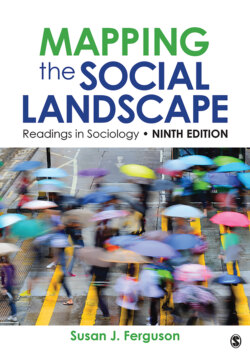Читать книгу Mapping the Social Landscape - Группа авторов - Страница 106
Reading 14 Using Racial and Ethnic Concepts: The Critical Case of Very Young Children
ОглавлениеDebra Van Ausdale and Joe R. Feagin
Many of the readings in this volume use ethnographic fieldwork, which involves scholars spending time observing or interviewing the research population, as Mary Romero did in her study of Chicana domestics (Reading 3) or Meika Loe did in her study of waitresses (Reading 9). While the first reading in this section on socialization did ethnographic research on parents and the gender identity of their children, this selection uses ethnographic research to observe young children and their understandings of race and ethnicity. The reading excerpted here, from a 1996 article in the American Sociological Review, is by Debra Van Ausdale and Joe Feagin. Van Ausdale and Feagin, both sociologists, observe preschool children and their conceptualizations of race and ethnicity. Contrary to what most people think, Van Ausdale and Feagin find that children as young as three to five years old already are using racial and ethnic concepts to define others and shape their social interactions with other children.
Since the 1930s social science has examined children’s attitudes toward race. Research has focused on situations in which race has meaning for children and on how children form racial identities (Clark and Clark 1939; Spencer, Brookins, and Allen 1985), create in-group racial and ethnic orientations (Aboud 1977; Cross 1987; Spencer 1987), form attitudes toward others (Williams and Morland 1976), and use race in friend selection (Schofield and Francis 1982). The literature clearly demonstrates that racial identification and group orientation are salient issues for children (Ramsey 1987).
Cognitive development theories propose stage models to explain children’s acquisition of racial and ethnic knowledge (Aboud 1977; Porter 1971). These models assume an age-related progression in children’s ability to interpret racial and ethnic information, usually depicting children as proceeding in linear fashion toward cognitively mature adulthood. Most research focuses on children over five years of age; very young children are rarely studied….
Researchers have rarely sought children’s views directly, beyond recording brief responses to tests. Few have interviewed children or made in-depth, long-term observations to assess social attitudes, limiting the ability to investigate more fully the nature of children’s lives. Children’s abilities have been seriously underestimated by reliance on techniques that do not make real-life sense to children (Donaldson 1978). Investigations often have assumed that young children are incapable of using abstract concepts (Holmes 1995). An emphasis on psychological testing is often coupled with the notion that children have limited understandings of race and ethnicity (Goodman 1964; Katz 1976; Porter 1971). Children are typically assumed to have temporary or naive views about social concepts until at least age seven. Prior to that age, children’s use of concepts differs from that of adults in form and content.
Source: Debra Van Ausdale and Joe R. Feagin, “Using Racial and Ethnic Concepts: The Critical Case of Very Young Children.” American Sociological Review, 1996, Vol. 61 (October: 779–793). Copyright © 1996 by the American Sociological Association. Reprinted with the permission of the authors and the American Sociological Association.
Little attention has been devoted to how children create and assign meaning for racial and ethnic concepts….
We provide data indicating that racial concepts are employed with ease by children as young as age three. Research based on the conception of children as incapable of understanding race (Menter 1989) presents an incorrect image of children’s use of abstractions. Drawing on Willis (1990) and Thorne (1993), we suggest that notions of race and ethnicity are employed by young children as integrative and symbolically creative tools in the daily construction of social life.
